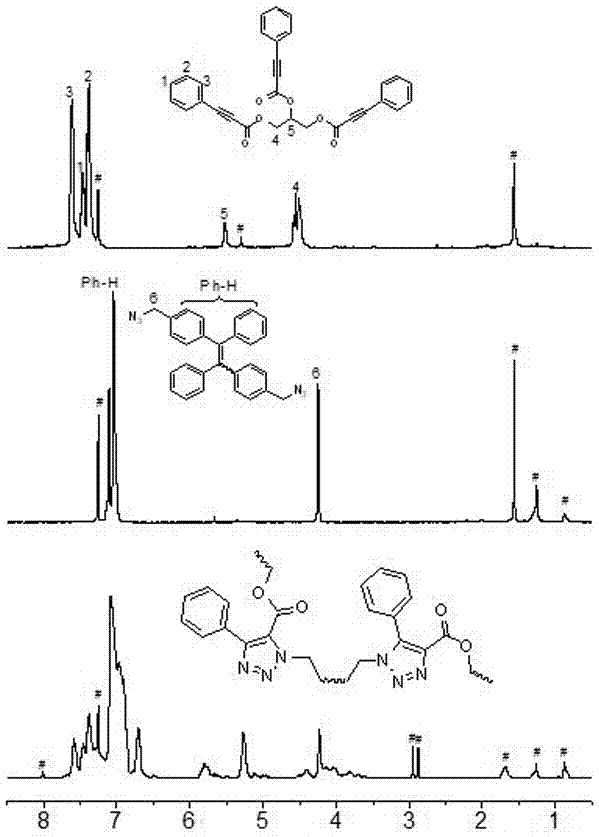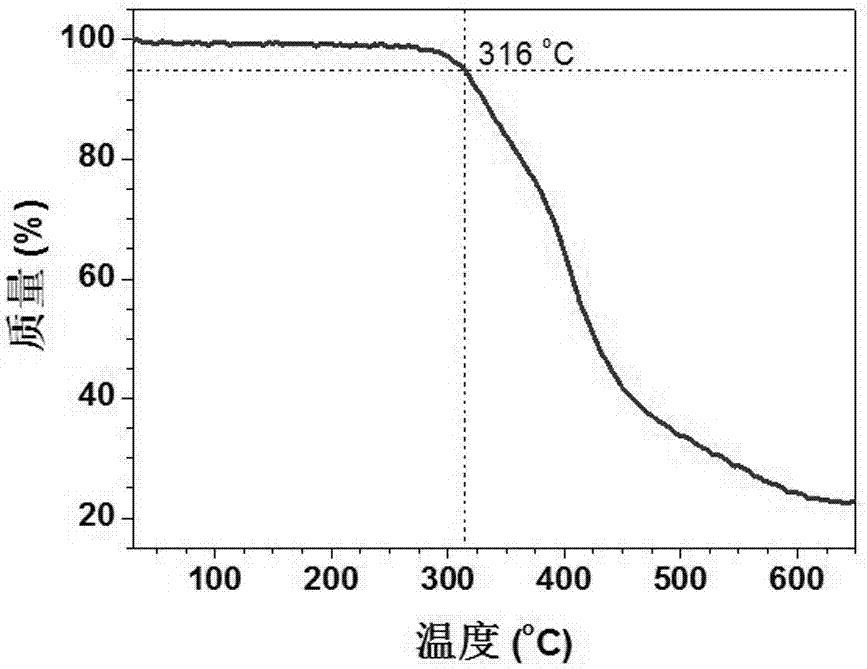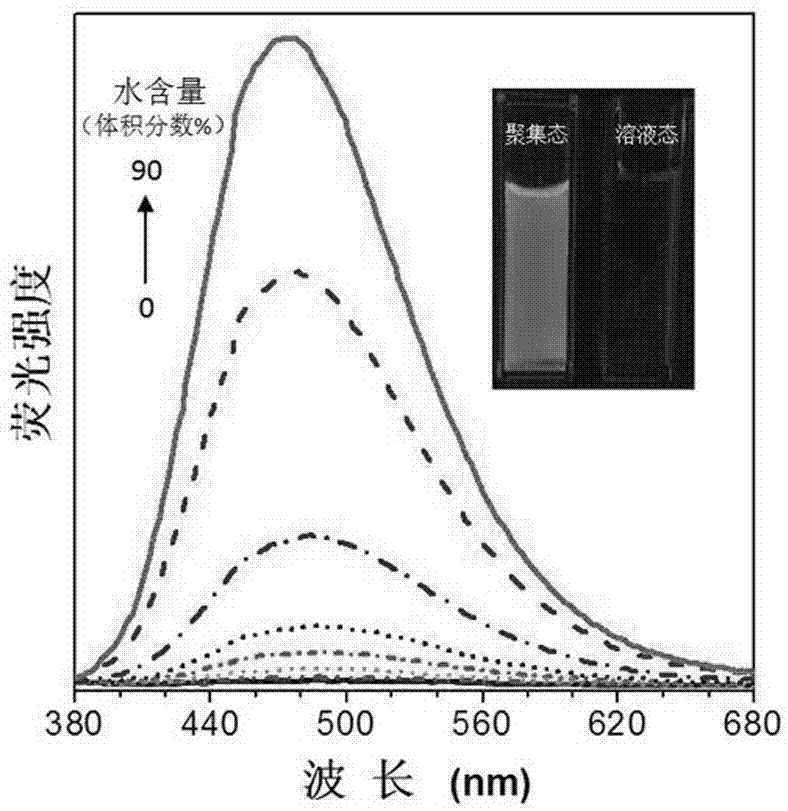Hyperbranched polyphenyl triazole formate as well as preparation method and application thereof
A technology of polyphenyltriazole formate and phenylpropiolic acid tribasic ester, which is applied in the fields of polymer chemistry and material science, can solve the problems of limited application range, quenching, and weakened luminescence, and achieve good compatibility, Good thermal stability, the effect of preventing explosive attacks
- Summary
- Abstract
- Description
- Claims
- Application Information
AI Technical Summary
Problems solved by technology
Method used
Image
Examples
Embodiment 1
[0040] (1) Synthesis of monomers
[0041] Add 0.4604 g (5 mmol) glycerol, 4.6402 g (22.5 mmol) DCC, 0.3678 g (3 mmol) DMAP, 0.5702 g (3 mmol) to a 250 ml two-necked flask p -TsOH, pumping N 2Three times, 100 ml of DCM was added to dissolve. In an ice-water bath environment, 2.5574 g (17.5 mmol) of phenylpropylic acid was dissolved in 20 ml of DCM and slowly added to the reaction system. The reaction was stirred overnight at room temperature. After the reaction was completed, suction filtration was performed, the filtrate was spin-dried, and the crude product was separated and purified by column chromatography. After drying to constant weight, 1.7 g of light yellow solid was obtained (71.4% yield), which was the first monomer phenylpropiolic acid tribasic ester monomer. 1 H NMR (400 MHz, CDCl 3 ) , δ 7.61 (d, J = 6.4 Hz, 6H), 7.46 (d, J = 7.0 Hz,3H), 7.38 (t, J = 7.0 Hz, 6H), 5.52 (s, 1H), 4.52 (dt, J = 11.8, 7.4 Hz, 4H).
[0042] (2) Preparation of polymer
[004...
Embodiment 2
[0047] The phenylpropiolic acid tribasic ester monomer and the dibasic azide monomer are the same as in Example 1. Add 47.7 mg (0.1 mmol) of the first monomer phenylpropiolate triglyceride and 54 mg (0.15 mmol) of the second monomer binary organic azide to a 10 mL polymeric tube with a sidearm. Evacuate the polymer tube and fill it with N through the side arm 2 Three times, add 0.25 mL of dry DMF and stir to dissolve. The system was placed at 100°C for 2 h. After the reaction, it was cooled to room temperature, diluted with 5 mL of chloroform, and added dropwise to 200 mL of vigorously stirred n-hexane through a dropper plugged with cotton. Stand still, filter, and dry to constant weight to obtain a polymer. Yield: 77.8%. GPC results show: M w = 4600, PDI = 1.42, has good processability and thermal stability.
Embodiment 3
[0049] The phenylpropiolic acid tribasic ester monomer and the dibasic azide monomer are the same as in Example 1. Add 47.7 mg (0.1 mmol) of the first monomer phenylpropiolate triglyceride and 54 mg (0.15 mmol) of the second monomer binary organic azide to a 10 mL polymeric tube with a sidearm. Pump N into the polymer tube through the side arm 2 Three times, add 0.25 mL of dry DMF and stir to dissolve. The system was placed at 100°C for 4 h. After the reaction, it was cooled to room temperature, diluted with 5 mL of chloroform, and added dropwise to 200 mL of vigorously stirred n-hexane through a dropper plugged with cotton. Stand still, filter, and dry to constant weight to obtain a polymer. Yield: 97.5%. GPC results show: M w = 19200, PDI = 2.46, has good processability and thermal stability.
PUM
 Login to View More
Login to View More Abstract
Description
Claims
Application Information
 Login to View More
Login to View More - R&D
- Intellectual Property
- Life Sciences
- Materials
- Tech Scout
- Unparalleled Data Quality
- Higher Quality Content
- 60% Fewer Hallucinations
Browse by: Latest US Patents, China's latest patents, Technical Efficacy Thesaurus, Application Domain, Technology Topic, Popular Technical Reports.
© 2025 PatSnap. All rights reserved.Legal|Privacy policy|Modern Slavery Act Transparency Statement|Sitemap|About US| Contact US: help@patsnap.com



